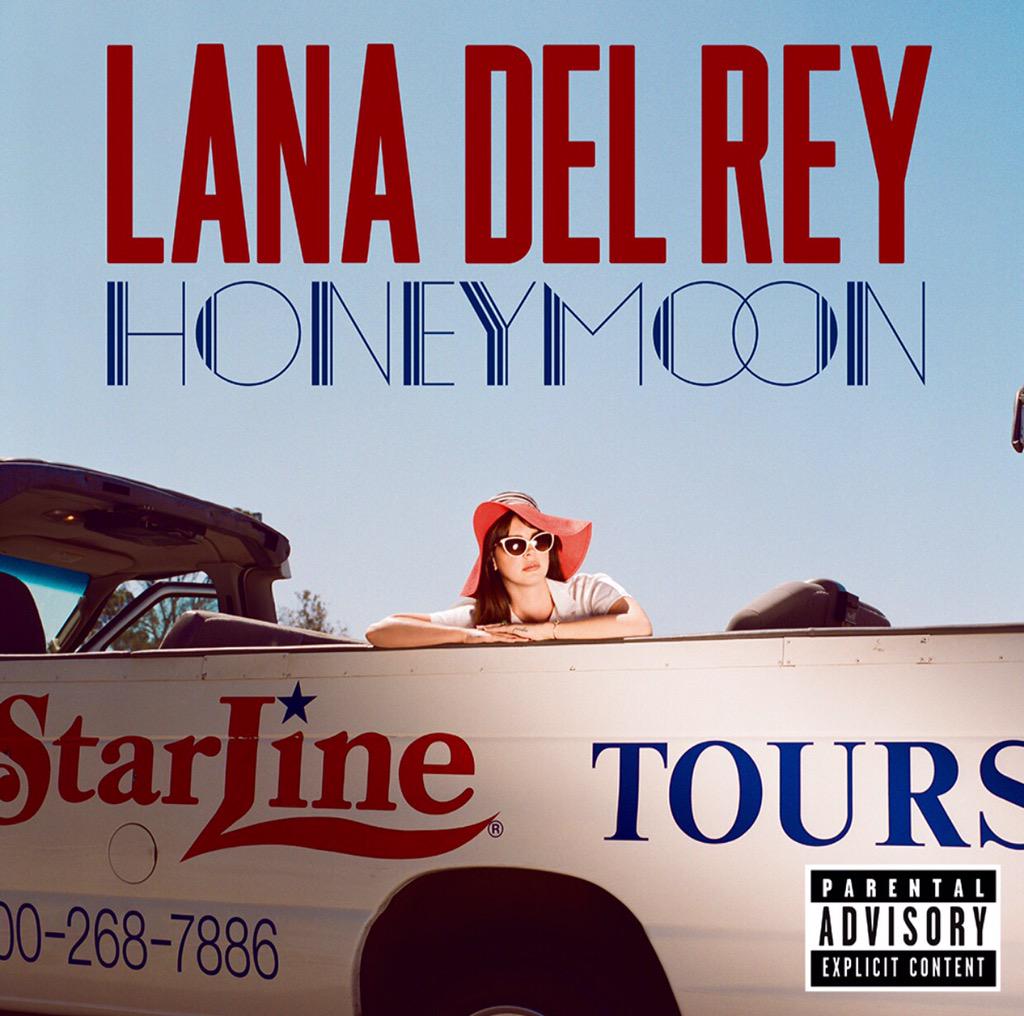Escapism, lust, and drugs: the holy trinity of Lana Del Rey’s work. But has she missed the mark with her latest release? The highly anticipated third album, “Honeymoon” dropped September 18th and Lana fanatics seem satisfied in all the right ways, except me.
The first strike against the album? The cover featuring a photo of Del Rey wearing a sunhat and sunglasses, sitting in red-white-and-blue Starline Tours convertible, all against the backdrop of a clear blue sky. Really, Lana? This cover is a huge disappointment because with a title like “Honeymoon,” fans expect a disturbing wedding cover concept, not Lana looking unbothered, relaxing in a patriotically colored automobile. This colorful aesthetic debunks her past album covers for “Born To Die” and “Ultraviolence.” They both exuded loneliness, curiosity, and a sullenness. The album cover for “Honeymoon” has the exact opposite effect. I do not look for clear days and sunglasses when I think of Lana, only minimalistic sorrow and pouty faces.
Lana Del Rey is not only my depressed and bitter queen, she is the artist I devote my sadness to. I have cried, screamed in the shower, and impromptu-danced to her doubt-laden tunes. Out of the 14 songs on “Honeymoon,” I can only continue that embarrassing routine to two songs — the first two tracks on the album, “Honeymoon” and “Music To Watch Boys To.”
They both remind me of songs from previous albums like: “Pretty When You Cry” and “Blue Velvet.” Each share slow, winding rhythms and seductive lyrics that showcase Lana’s vocal range and perpetuates her tortured visions of romance. They succeed in taking Lana’s artistry to another level. But there are too many songs on “Honeymoon” that don’t continue this trend.
Despite 24 million views on YouTube, Lana’s summer single, “‘High By The Beach” just fails altogether at being a good song. While the lyrics complement her defeatist attitude toward love, the lyrics drown in a commercial sea of up-tempo beats, pop production sounds and marijuana references. Lana also introduces too many emotional themes into one song. One verse says, “You could be a bad motherf***er/But that don’t make you a man,” while another says “I’ll do it on my own/Don’t need your money, money/To get me what I want.” These verses are confusing since the basic premise of the song is about getting high with her lover. I am pretty sure no one wants to get high on the beach and hear complaints about how you aren’t the man for me and I can do it on my own. That same ambiguity continues throughout the album in songs like “Freak,” “Swan Song” and “Salvatore.”
“Born To Die” and “Ultraviolence” are classics that have propelled Lana Del Rey into the stardom she shines in now. Her cult-like fans religiously thirst for her music, as if she is the reverend of the Sorrow High Church. Her music is extreme but that’s what makes Lana Del Rey our queen. But I do not see enough of it here in “Honeymoon.” Just wilted roses, not burning roses.
Grade: C minus




